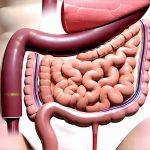The human body is a remarkably complex system, constantly communicating its needs through a variety of signals. Often, these signals can be subtle and easily misinterpreted, leading to confusion about what our bodies are actually trying to tell us. Two common internal sensations – hunger and queasiness – frequently fall into this category. Both can manifest as uncomfortable feelings in the stomach area, but understanding their distinct origins and characteristics is crucial for responding appropriately and maintaining overall wellbeing. Mistaking one for the other can result in unnecessary worry, inappropriate eating behaviors, or even delayed attention to a potentially developing health issue.
Many people assume that any discomfort felt in the stomach immediately signifies hunger. However, this isn’t always the case. Queasiness – that unsettling feeling of nausea and potential sickness – is often dismissed as simply needing food when it might indicate something entirely different, ranging from mild indigestion to a more serious underlying condition. Discerning between these two sensations requires careful attention to accompanying symptoms, timing, and your body’s overall state. This isn’t about self-diagnosing; it’s about becoming more attuned to the nuanced language of your body to make informed decisions regarding your health and care. Understanding the difference between stomach sensitivity and true GERD can also play a role in interpreting these signals.
Understanding Hunger Signals
Hunger is a fundamental physiological drive, essential for survival. It’s not merely an empty feeling in the stomach but a complex interplay of hormonal signals and neurological responses. The sensation arises when energy stores are depleted and the body requires replenishment. Ghrelin, often called the “hunger hormone,” is released by the stomach when it’s empty, signaling to the brain that it’s time to eat. Conversely, leptin, the “satiety hormone,” signals fullness after eating. These hormones work in tandem to regulate appetite and energy balance.
However, hunger isn’t always a dramatic, growling-stomach experience. It can present itself in various ways, including: – A gradual emptiness or hollow feeling – not necessarily painful, just noticeable. – Decreased energy levels and difficulty concentrating. – Mild stomach rumbling (though this can also occur with queasiness). – Thoughts turning to food, or daydreaming about meals. – Irritability or changes in mood. True hunger typically builds gradually over time and is satisfied by a reasonable amount of nourishing food. It doesn’t usually come on suddenly or intensely.
Furthermore, emotional eating can often mask true hunger signals. We might reach for food not because our bodies require fuel, but as a response to stress, sadness, boredom, or other emotions. Learning to differentiate between physical and emotional hunger is an important step in developing a healthier relationship with food. Paying attention to what you’re feeling before reaching for a snack can help identify whether it’s genuine physiological need or emotional craving. Recognizing the connection between overthinking and IBS might also influence eating patterns.
Decoding Queasiness: Beyond Just “Feeling Sick”
Queasiness, unlike hunger, isn’t about needing energy; it’s often an indication that something is irritating or disrupting the digestive system. It’s a protective mechanism designed to prevent you from consuming potentially harmful substances or overloading your system. The causes of queasiness are incredibly diverse and can range from relatively benign triggers to more serious medical concerns. Common culprits include: – Food poisoning or food intolerances. – Viral or bacterial infections (like the stomach flu). – Motion sickness. – Medication side effects. – Anxiety or stress. – Migraine headaches.
The sensation of queasiness is frequently accompanied by other symptoms that distinguish it from hunger. These can include: – A churning or unsettled feeling in the stomach, often more intense than hunger pangs. – Salivation (excessive production of saliva). – Sweating. – Pale skin. – Lightheadedness or dizziness. – A general sense of unease and discomfort. Importantly, queasiness often decreases appetite, whereas hunger increases it. You may find the thought of eating anything completely repulsive when feeling nauseous. Understanding acidic and alkaline reflux symptoms can also help differentiate between discomforts.
It’s vital to remember that persistent or severe queasiness should be evaluated by a healthcare professional. While occasional bouts of nausea are usually harmless, ongoing symptoms could signal an underlying medical condition requiring treatment. Ignoring prolonged queasiness can lead to dehydration and other complications. Never self-treat serious nausea without consulting a doctor. The link between gut inflammation and diarrhea could be contributing factors, too.
Identifying Key Differences: A Practical Guide
Distinguishing between hunger and queasiness often requires careful observation of accompanying symptoms and timing. One helpful approach is to ask yourself several key questions: 1. How did the sensation begin? Hunger typically develops gradually, while queasiness can come on suddenly. 2. What other symptoms are present? Look for signs like salivation, sweating, dizziness, or lightheadedness which indicate queasiness. 3. Does the thought of eating make you feel better or worse? Hunger improves with food, whereas queasiness is often worsened by it.
Consider the context surrounding the sensation. Did you recently eat something that might have been questionable? Are you experiencing stress or anxiety? Have you been traveling and potentially exposed to motion sickness? These factors can provide valuable clues as to whether you’re dealing with hunger or queasiness. Pay attention to your body’s overall state – are you fatigued, achy, or exhibiting other signs of illness? These subtle cues can often differentiate between a simple need for nourishment and something more concerning.
The Role of Hydration & Rest
Both hunger and queasiness can be significantly impacted by hydration levels. Dehydration can sometimes mimic the feeling of hunger, leading to unnecessary snacking. Therefore, before reaching for food, try drinking a glass of water and waiting 15-20 minutes to see if the sensation subsides. Similarly, adequate hydration is crucial when experiencing queasiness as it helps prevent dehydration from vomiting or diarrhea.
Rest plays a vital role in both situations. When hungry, allowing your body time to rest and digest can improve satiety signals. If you’re feeling nauseous, resting in a quiet, dark room can often help alleviate symptoms. Avoid strenuous activity when experiencing queasiness as it can exacerbate the problem. Prioritizing self-care – including adequate hydration and rest – is essential for recognizing and responding appropriately to both hunger and queasiness. Bloating and reflux discomfort can often accompany these feelings, too.
When To Seek Professional Help
While most instances of hunger and queasiness are easily managed, there are times when seeking professional medical attention is crucial. Consult a doctor if you experience any of the following: – Severe or persistent nausea and vomiting lasting more than 24 hours. – Blood in your vomit. – Difficulty keeping down fluids, leading to dehydration. – High fever accompanied by queasiness. – Abdominal pain that is severe or worsening. – Sudden changes in appetite or weight. – Queasiness that interferes with daily activities. These symptoms could indicate a more serious medical condition requiring prompt diagnosis and treatment. The difference between GERD and functional heartburn should be understood if these symptoms persist. Remember, this information is not intended to be a substitute for professional medical advice. Always consult with a qualified healthcare provider if you have concerns about your health. Additionally, understanding allergy and sensitivity can help pinpoint potential triggers.


















